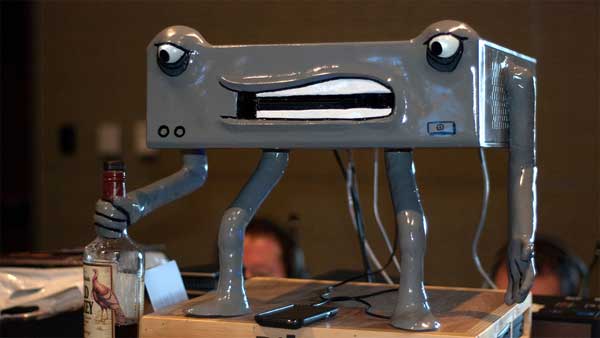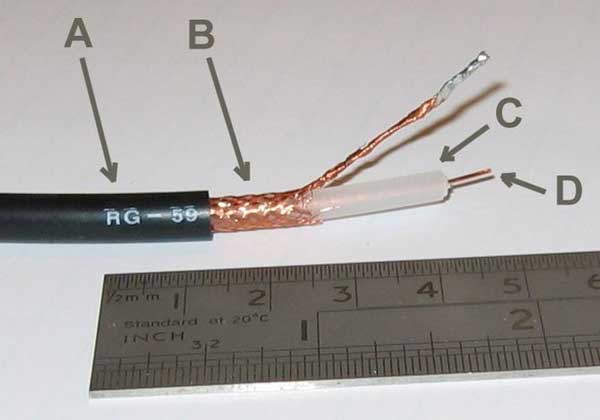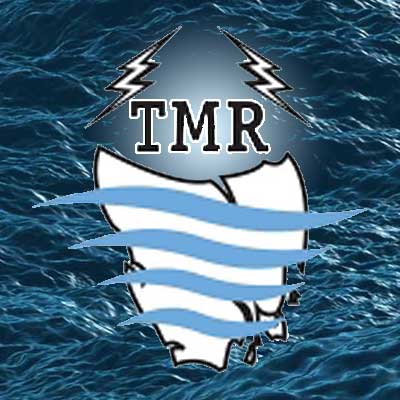
Radio FAQs
More questions?
This section answers some common questions about installing and using your marine radio.
Click on a blue bar to reveal the answer.
Do I Need a Licence?
If you have HF radio onboard, you must license (register) the radio and receive a Callsign from the ACMA and you must obtain a Marine Radio Operators Certificate of Proficiency (MROCP) to operate it.
VHF has a "class licence" which means you don't have to have to license (register) the radio, but you must obtain an MROCP, a MROVCP or an AWQ (Australian Waters Qualification) to operate it. Check out the Australian Maritime College website to find out how to obtain a Certificate of Proficiency for marine radio. Check out the Australian Maritime College website to find out how to obtain a Certificate of Proficiency for marine radio.
What is this MODE setting and how is it connected with Channel 66?
Most VHF radios have several pre-set modes: You must set your radio to International (INTL) mode in Australia.
The different modes pre-set the radios with different channel characteristics. If you use the incorrect mode in Australian waters, you will find that you cannot communicate on some channels (such as 66) and via repeater stations. (Note that repeaters are not monitored in Tasmania).
See also Ship-to-Shore vs Ship-to-Ship
Ship-to-Shore vs Ship-to-Ship
Most of the channels that you use are Simplex (ship-to-ship). They transmit and receive on the same frequency. That is why you can hear the transmissions from other boats who are on the same channel as you (eg 16).
Certain channels are Duplex (such as 66) and transmit and receive on different frequencies. That is why boats can hear Tas Maritime on 66 but do not hear other boats.
That is why we use this channel: we know it is not in use so we can go there with confidence.
In some parts of the world Channel 66 is Simplex: that is the reason that your radio should be set to International mode in Australia waters.
The Microphone
Make sure you replace your microphone in its cradle after every use. There have been instances when microphones have been left on a seat and something placed on top of it resulting in the press-to-talk (PTT) button being continually depressed. This severely impacts local network operation and can hamper search and rescue operations.
Similarly if you spill food or drink on the microphone, make sure that the PTT button is free and does not stick.
Teach Your Friends and Family to use the Radio
If something happens to you while at sea, it's important that someone who knows radio procedure can take over making any necessary radio calls. Calls such as "hello, is anyone there" are extremely unlikely to get a response. Show your friends and family how to operate your radio and, yes, let your kids make calls and position reports under your supervision. That way they will learn correct procedure which may save a life some day.
Fun with the Radio
This is a huge no-no! The radio is in the vessel for reasons of safety, it is not a toy! Do not allow others to 'play' with the radio. Whistling, "hello", obscenities, etc are not only annoying and may disrupt urgent message - they are illegal, and if traced, it's the vessel's master who will be in trouble.
Radio Checks
It's a good idea to check your radio regularly, particularly if it has not been used for some time. Contact Tas Maritime Radio on the calling channel. You will then be transferred to a working channel for a radio check. The results of your radio check on VHF will be given as for example "loud and clear", but, if calling on HF mostly it will as, for example "5 by 5" or “4 by 3”. The meaning of these numbers is shown in the table below:
| Readability | Strength | ||
|---|---|---|---|
| 1 | Unreadable | Weak | |
| 2 | Barely readable - occasional words are understood | Fair | |
| 3 | Readable with considerable difficulty | Good | |
| 4 | Readable with practically no difficulty | Moderately strong | |
| 5 | Perfectly readable | Very strong |
Things to note when doing radio checks:
| • DO NOT use a distress channel for a radio check - wait until you are on a working channel. | |
| • ALWAYS state your vessel name and/or callsign - if you do not identify yourself, it is unlikely you will get a response. | |
| • ALWAYS give your location. If the results of your radio check are not good, try again later from a different location. Our operators can advise you whether your signal is what would be expected from your given location. | |
| • NEVER ask for a radio check by simply calling "Radio check", "1-2-3", or "Hello". If you do not identify yourself, TMR operators will not respond. |
True vs Magnetic Bearings
A True bearing is the direction shown on a map or chart - it's based on North being the direction to the North Pole.
A Magnetic bearing is the direction shown by a compass - it's based on North being the direction to the magnetic North Pole.
The two are not the same. The magnetic North Pole varies according to the Earth's magnetic field, and is influenced by certain landforms, mountains with a high iron ore content, for example. Depending where you are, the magnetic deviation may be to the east or west and it may be a degree or two or up to 15 degrees or more.
This is why it is important for you to tell us whether the course you are steering is True or Magnetic - over distance and time your estimated position could be out by many nautical miles. If a search has to be made to find you, SAR authorities will use your last known position and your bearing to estimate your location. If you tell us the incorrect type, your actual location could be out by many nautical miles. While this is less likely to happen with EPIRBS and GPS units, it's still a possibility. For example, with a 15° magnetic deviation, the difference is over 26 nautical miles for every 100nm travelled.
If you read a bearing from your compass, it's Magnetic. If you read it from your GPS, it's probably True - this is up to you when the GPS is set up so make sure you know which. When you call Tas Maritime with a position description and give a bearing, ALWAYS say whether it is Magnetic or True
The NATO Phonetic Alphabet
Some words, in fact some vessel names, are very hard to hear correctly over a radio, especially on HF where there is often a lot of interference. In instances such as this the NATO Phonetic Alphabet should be used.
Not many mariners use the NATO Phonetic Alphabet these days, but if you wish you can download a copy here.
Installing Your VHF Marine Radio

There are a number of things to consider when installing VHF radio on a boat. Mounting of the antenna is the first consideration. Rule one - the higher the antenna the greater the range. On a yacht, there are generally two locations, the pushpit or the masthead. Mounting the antenna on the pushpit usually results in some degree of directivity. The mast and rigging often 'block' the signal resulting in fading while swinging at anchor. Because of the height, a masthead installation offers greater range and omni-directional coverage, but remember, 'if you lose the mast, you lose the radio' probably at a time you most need it! If you participate in competitive yacht racing it is advisable to install an emergency antenna on the pushpit. On a ketch the mizzen mast can be used.
On cruisers, the general rule is - mount the antenna as high as possible and at least a metre away from other antennae, while on trailer boats, a swing down antenna, mounted as high as possible, is usually the answer. On runabouts and halfcabs, it is a good idea to mount the antenna on the driver's side where it is more visible when coming alongside jetties or other boats and is therefore less likely to sustain damage.

Careful consideration should be given to where to mount the radio. Whilst it may look nice mounted just above the chart table down below, ideally it should be able to be operated by the helmsman. It must be mounted in a dry location, clear of rain and saltwater spray and free from engine vibration. The microphone holder should be mounted where the microphone is easily accessible at all times. An extension horn speaker can be mounted externally if required. Some manufactures offer 'remote heads' for flybridge or cockpit installations. Because the radio has its own inline fuse, power for the radio should be taken from the nearest reliable power source, preferably from the heavy cables at the INPUT to the accessory fuse / power board. All power cables should be 'tinned' to ensure good connections. The radio should be the last thing onboard left operating after all other equipment and wiring has failed. A spare fuse or two should be taped to the radio fuse holder as spares. Note that unlike HF radio installations, VHF radios do NOT require an 'earth plate' through the hull.
Care of your Radio
Make sure your radio is properly mounted so that it cannot be damaged in heavy seas and keep loose objects away from it. Make sure the microphone is securely in its cradle. Ensure that the radio is mounted where it is safe from sea spray and away from engine vibration.
Radio Faults
Apart from an electronic fault within the transceiver (which will require specialist attention), most radio faults come down to faulty connections. Regularly check all your cables and connectors as well as your antenna insulator.
Radio hiss but little or no signal indicates a poor connection or a short circuit - a cable may be broken or frayed, or a connector damaged. Your antenna may be shorting to the hull. If you have a whip antenna it may be cracked. The antenna insulator may be cracked or covered with a layer of salt. Worse, you may have painted it!
Low battery
If you need to use the radio, especially in an emergency, and the battery is low, try reducing the radio's output power. There's a good chance you will be heard and your radio will remain functional for longer. You can always increase power again if your call is not heard. If you are sailing a yacht and have not charged the battery, you are looking for trouble.
LED Interference - something to look out for
A recent US Coast Guard Marine Safety Alert (15 August 2018) highlighted that LED lighting could potentially interfere with VHF and AIS transmissions. To our knowledge this has not been reported in Australia and for all we know the offending LED types may not be available here. You can read/download the USCG article here:
Marine Radios or Mobile Phones for Safety at Sea?
Tas Maritime Radio (TMR) has for many years been concerned about the reliance by some mariners on mobile phones for safety communications – rather than properly installed marine radios. Of course anyone in trouble on the water can (and should) use any means available to them to gain assistance, but if you only take a mobile phone, please consider the following:-
| • The range out to sea and in difficult locations is generally far greater on the marine VHF networks than mobile phone networks. For instance, TMR coverage on VHF extends out to around 200km. | |
| • A call for help from a mobile phone will not alert anyone in your vicinity to your plight. In fact calling 000 from a phone will just cause delays because in the end a coastal station will probably be alerted to put out a call on your behalf on VHF to alert vessels near you (which you could have done much sooner). | |
| • In some situations you will not be able to hear voices on your phone due to wind, sea and/or engine noise. Marine radios have very high sound output capability so you can hear no matter what. | |
| • A properly installed marine radio will operate for several days from a vessel’s battery. It will continue operating long after the battery will not start the engine. | |
| • Marine radios are designed to withstand the marine environment, will not slip overboard or into the bilge and will not suddenly go flat on you. | |
| • You will not become aware of warnings about oncoming weather, navigation hazards, sharks and other hazards – nor will you be in a position to know of and assist other mariners who may be in trouble nearby. |

We at TMR are aware of actual instances where a life might have been saved if the vessel had been properly equipped with a marine radio rather than a phone. By all means take your mobile phone with you if you wish, but your installed marine radio is by far the best option for safety communications at sea – and they are so cheap these days.
VHF DSC – What’s the story?
Over recent months we have had a number of enquiries from members regarding VHF DSC (Digital Selective Calling) and, when it comes time to replace their old radio, should they purchase a DSC VHF radio?
Some points to consider are listed below:-
| • DSC is not used by Tas Maritime Radio because we are manned 24/7 (thus negating the need to have to alert a base after hours). CH16 IS THE DISTRESS AND CALLING CHANNEL 24/7 throughout the state. | |
| • Standard VHF radios without DSC are generally about $20 - $100 cheaper. | |
| • A Long or Short Range Operators Certificate of Proficiency is required before AMSA will issue a Maritime Mobile Safety Identity number. | |
| • The radio is useless as a DSC radio until the MMSI number is programmed into the radio. | |
| • Most DSC radios need to be connected to a GPS or Chart Plotter to enable position (Lat & Long) to be transmitted. This can be difficult for the average person to connect the right wires together without damaging either unit. |
As a result of the above the use of VHF DSC in Tasmania is minimal.
